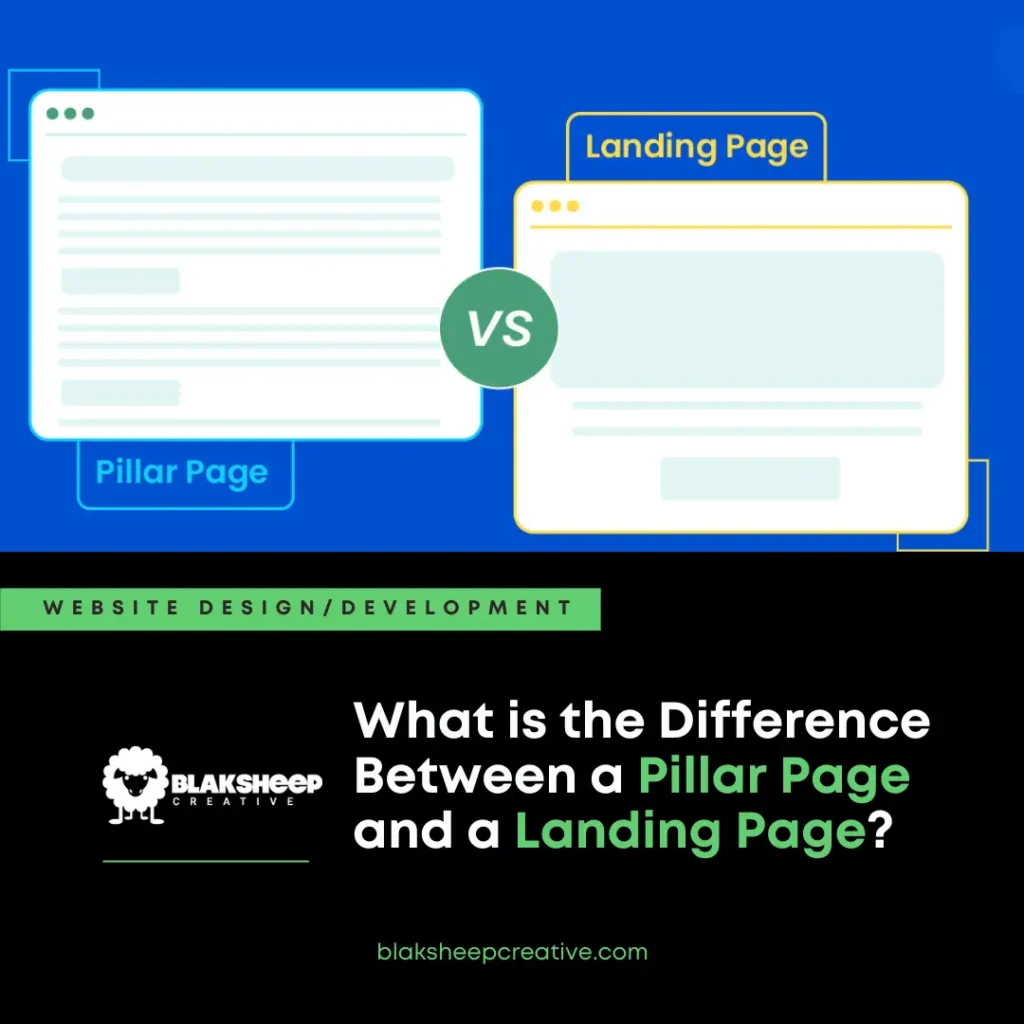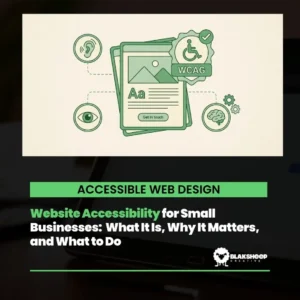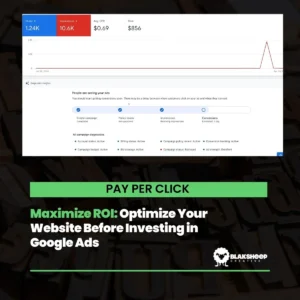Welcome to the dynamic world of website content, where each page plays a unique role in not just attracting visitors but also transforming them into loyal customers. In digital marketing, understanding the nuances of your website’s pages is paramount, particularly regarding two fundamental types: pillar pages and landing pages.
Imagine your website as a versatile tool designed to captivate your audience. Some pages act as powerful magnets, drawing in visitors with rich, informative content and establishing your site as a primary resource in your field. These are known as pillar pages. On the other hand, certain pages function as welcoming hosts, presenting irresistible offers to visitors and seamlessly guiding them toward making that all-important decision. These are your landing pages.
In this blog, we’ll delve deep into the essence of pillar and landing pages. We’ll uncover what makes each type stand out, how they contribute to the overall success of your website, and share practical tips for crafting pages that resonate with your audience. Whether your goal is to climb the search engine rankings with your blog content or convert your product page visitors into leads and, ultimately, customers, grasping the distinct roles of these pages is critical.
In today’s content-driven digital landscape, every aspect of your website, from the word count and keyword integration to visual elements and calls-to-action, must be strategically aligned with your marketing goals. Content may be king, but its reign is only effective with clear objectives guiding your inbound marketing strategies.
As we embark on this journey, we will discuss the specifics of pillar and landing pages and highlight the key differences between them. Understanding these differences is the first step in harnessing the full potential of your website and steering your digital marketing efforts toward measurable success.
Let’s begin this explorative journey and unlock the full potential of your website, one page at a time!
What is a pillar page?
A pillar page is usually an ungated long-form content piece that acts as the center for exhaustive information about a broad main topic on a single page. It provides helpful internal links to detailed pieces of related content on specific subtopics mentioned in the pillar page content.
As a marketing strategy, pillar pages help build trust with website visitors. If you want to take a deep dive into pillar page content strategy, here is a helpful blog on what a pillar page is and how it helps with SEO ranking: What Are Pillar Pages And How To Create Them In 11 Simple Steps
You can create many types of pillar pages to boost traffic on your website. For example, you can create a 10x pillar page like Wine Folly on a broad topic like “What is wine?.” This is an ideal example for inbound marketers to understand pillar pages.
Best Practices for Pillar Page Content
- Conduct thorough research (competitor and keyword) to understand how well others have covered a topic and the keywords they have used.
- Start from zero and create an extensive topic cluster covering all the subtopics of the core topic.
- Include a table of contents on your pillar page for easy navigation, a better user experience, and enhanced search engine indexing.
- Use a healthy mix of short-tail and long-tail keywords in your content.
- Answer all the questions related to a search query in your content.
- Make your pillar page shareable by giving direct share links to popular social media platforms like Facebook, Twitter, LinkedIn, etc.
If you need inspiration on creating a pillar page for your website, here are 21 high-converting pillar page examples to help you get started.
What is a landing page?
A landing page is a web page showcasing an offering (product, service, templates, or information) to collect visitor information (name, email, phone number, etc.).
Best Practices for Landing Pages
- Keep your landing pages easy to understand and navigate. Distribute your CTAs evenly across the page.
- Craft engaging copies that hook visitors with emotive and action words loaded with keywords.
- Focus on creating a visual experience for your visitors to maximize the chances of generating leads.
- Employ technical on-page search engine optimization for better visibility in SERPs.
- Include only relevant hyperlinks to useful product pages and related blog posts.
- Ensure your landing page is easily shareable on social media platforms to maximize ROI.
Marketers use both pillar pages and landing pages in their content strategy. But isn’t the goal of both these pages to generate leads one way or the other?
Let’s find out.
The difference between pillar pages and landing pages
The answer to ‘Are pillar pages and landing pages the same?’ is no, they are not. Each has its own way of engaging visitors and achieving the end goals. The following are the key differences between pillar pages and landing pages.
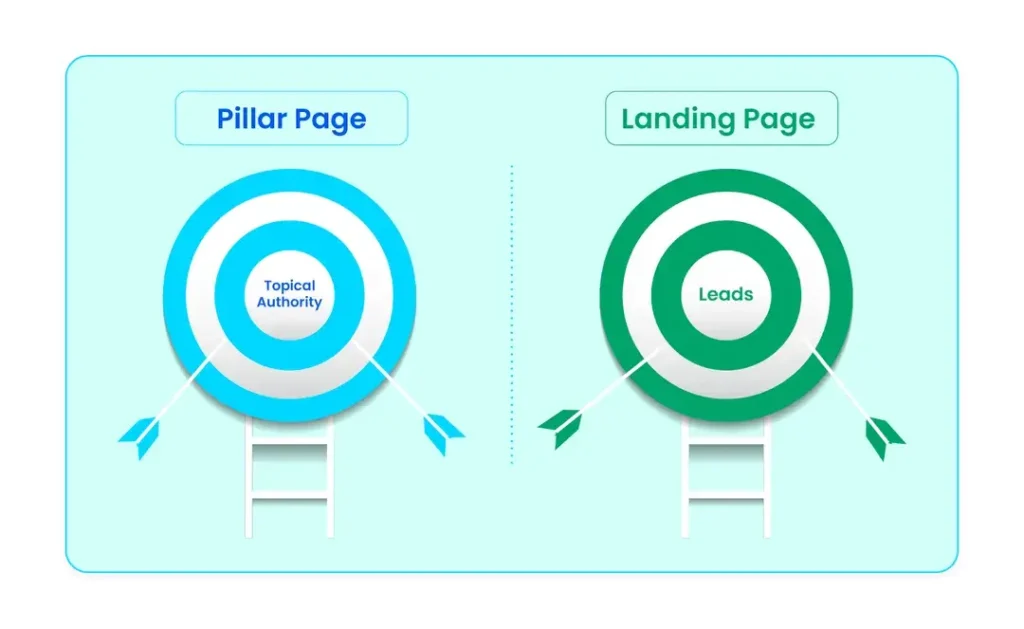
Purpose
A pillar page aims to build your brand’s authority on a specific topic, whereas a landing page aims to generate leads for follow-up marketing campaigns.
Word Count
Pillar pages are generally text-heavy (more than 2000 words), while landing pages only contain short-form copy and CTAs.
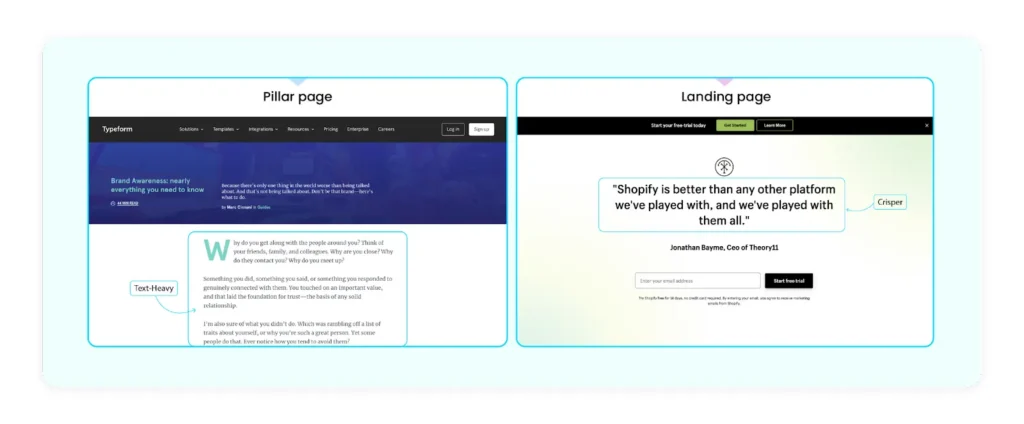
Design
The UI/UX of a pillar page looks like a long blog post with visual elements for quick access and to break complex ideas into easy-to-understand images. Focusing on pillar page UI/UX enhances the user experience and helps them derive maximum value from the content.
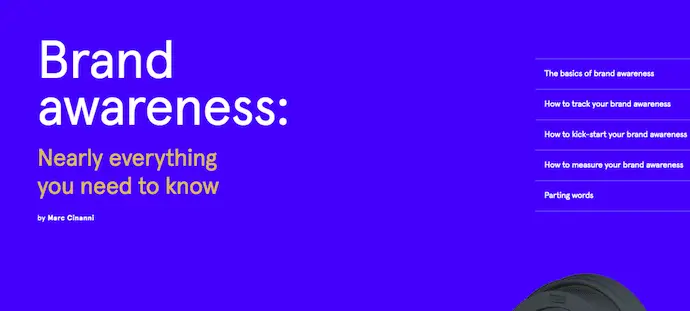
Example image of design of a pillar page from typeform.com
A landing page is a website page with advanced UI/UX integrating design elements that attract visitors and nudge them to take the desired action. The goal of landing page UI/UX is to inspire visitors and make them perform a specific action.
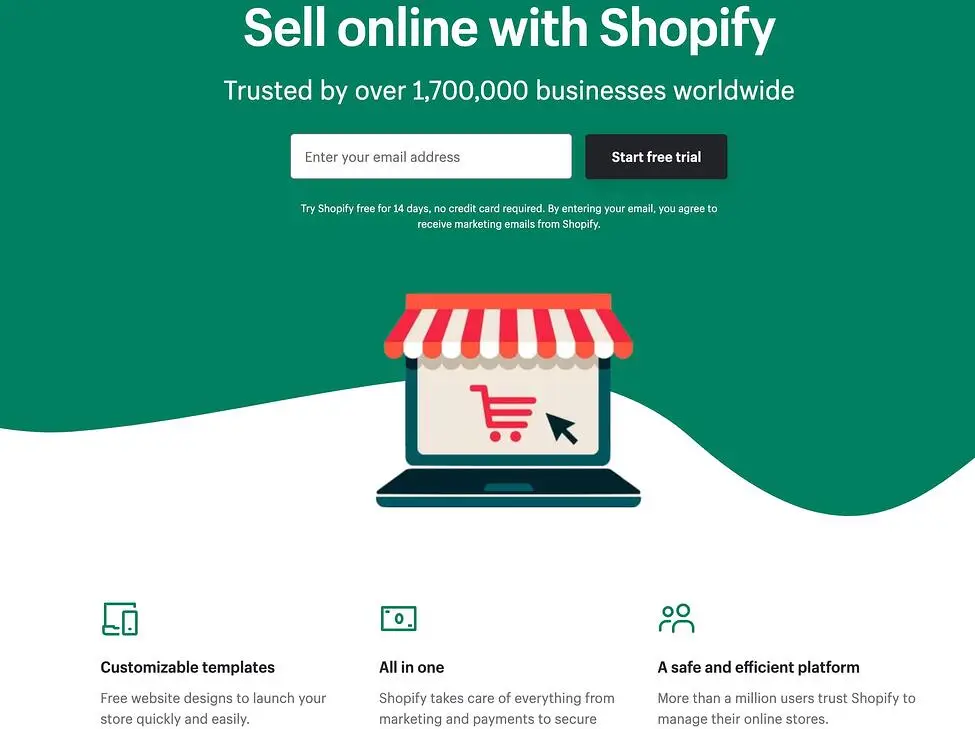
Example image of design of a landing page from Shopify
Stage of the buyer’s journey
A pillar page almost always targets buyers in the initial stages of their journey (awareness, consideration). On the other hand, landing pages can be adapted to fit all the stages of the buyer’s journey.
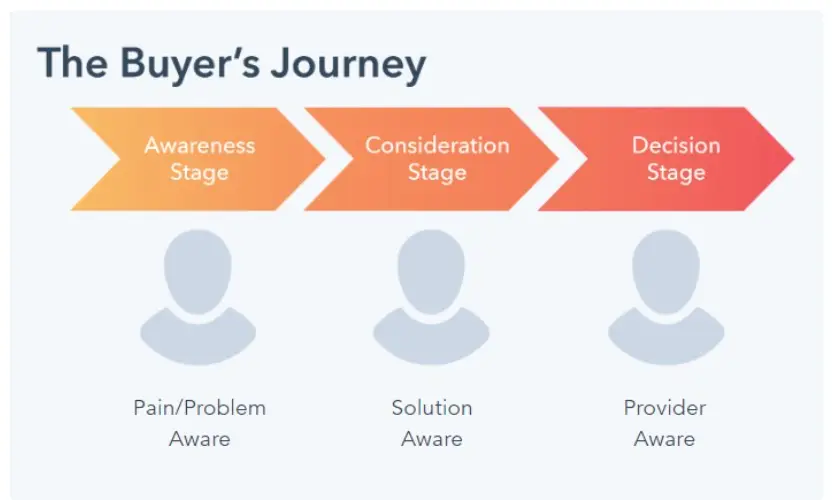
For example, landing pages that offer an ultimate guide on something as an ebook download target the awareness stage, whereas pages that redirect visitors to the eCommerce page target buyers in the final decision-making stage.
Elevate Your Online Presence with BlackSheep Creative
Maximize your sales with a bespoke eCommerce website designed to impress and convert. BlackSheep Creative specializes in creating seamless, user-friendly online shopping experiences that reflect the uniqueness of your brand.
Embark on the journey to digital excellence. Explore Our Professional eCommerce Website Design Services and see the difference expertise makes.
Interlinking
Another effective way of differentiating between the two types of pages is through internal links. Pillar pages are created with the goal of interlinking individual blogs or web pages relevant to the topic.
In contrast, landing pages may or may not link to different pages on your website.
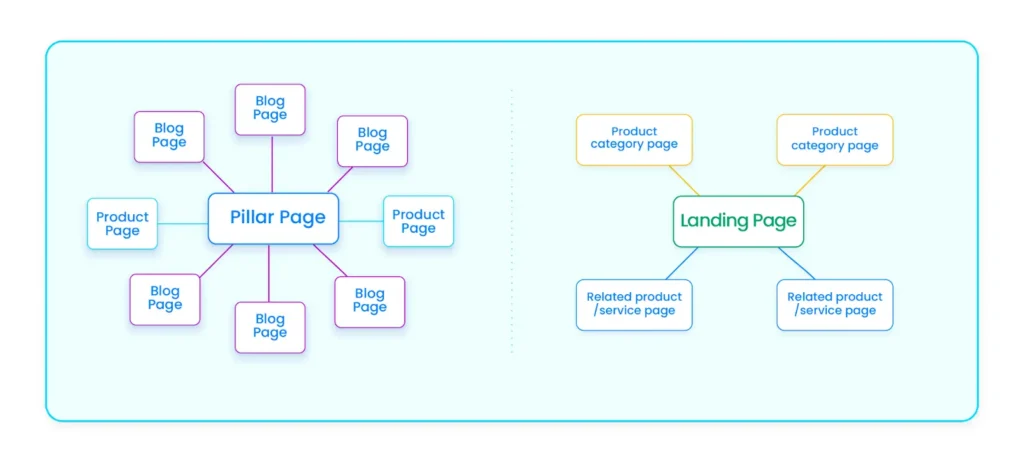
For instance, if you’re offering a DIY template download on a landing page, you may not link to any page on your website.
On the other hand, if you’re selling a product, you may link to the product’s purchase page or other related products. Generally, they link to product or service-related pages only.
Backlinks
Over time, the organic traffic on pillar pages generates backlinks automatically, while landing pages need conscious efforts to get backlinks. There is also no or minimal backlinking for landing pages, whereas pillar pages have heavy interlinking.
Also, backlinks to pillar pages enhance your website’s SEO rankings, but backlinks to landing pages may have little effect on your SERP rankings.
Whether you’re creating a pillar or a landing page, the uåltimate goal must be to curate an enjoyable user experience for your visitors. By now, we hope you have a fair understanding of both. Use the points mentioned above to differentiate your pillar and landing pages.
Automate your pillar page strategy with BlakSheep Creative
As we close this insightful journey through the distinct worlds of pillar pages and landing pages, remember that the effectiveness of your digital strategy lies in the details. Crafting impactful, goal-oriented pages is not just an art; it’s a strategic endeavor that sets the stage for your online success.
If the thought of identifying content gaps, mixing the right keywords, and meticulously crafting content for each pillar page feels overwhelming, fret not. BlakSheep Creative is here to turn these challenges into a seamless, rewarding process.
Let us empower your digital presence. With our expertise, your pillar pages will be content-rich and strategically optimized to captivate your audience and bolster your brand authority. Our dedicated team is poised to tailor a pillar page strategy that resonates with your business objectives and audience preferences.
Ready to elevate your content game and drive measurable results? Connect with BlakSheep Creative now and transform your content strategy from ordinary to extraordinary. Fill out the form below to get started:
Unleash your website’s true potential with BlakSheep Creative – where strategy, creativity, and results converge.
